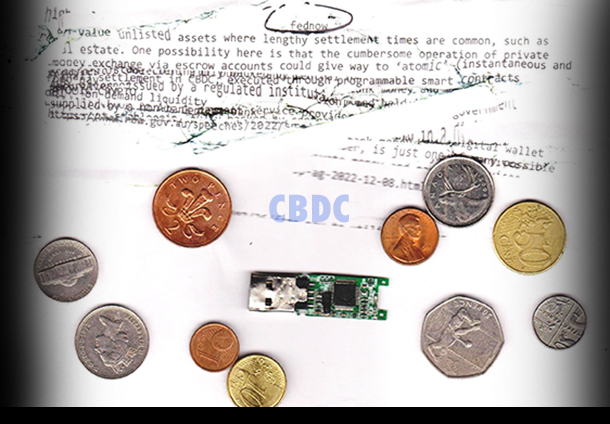from 21st Century Wire:

We will investigate the recent announcement of FedNow, a Federal Reserve instant payments service. We will elucidate what I see are the 7 key pillars that make up the CBDC system. In doing so we can watch how the process is unfolding with open eyes, and not be led astray into uninformed opinions. There is a global financial revolution occurring and we would do well to recognise it as it unfolds.
TRUTH LIVES on at https://sgtreport.tv/
This article is a deep dive into CBDCs as they stand in Spring 2023, but also a launching off pad for deeper and more detailed researches on the topic.
On March the 10th of 2023 the United States Federal Reserve announced the new stage of its FedNow instant payments system. They intend to launch the system in July following a period of certification from April. Although originally announced in 2019, this latest decree has caused a real stir in alternative media and crypto space, with many critics expressing a growing concerns about an emergent banking system, one based on CBDCs – Central Bank Digital Currencies. In this article we will journey through the landscape of modern currency innovations to investigate how far along the road to a CBDC system we are and what it might look like. We will also evaluate the claims by both central bank proponents and opponents. Along the way I will attempt to define as many of the terms in use to make clear what is often an obscure subject for the regular citizen.
We might as well start with a broad definition of a CBDC. A Central Bank Digital Currency is a digital central bank liability. A central bank is a nominally private institution. It is usually not directly a facet of the government – though still a national institution – and it controls a nation’s currency. The decisions it makes can fundamentally change the lives of many millions, and transform the political economy literally overnight. They decide how much and when to print a currency as well as the rate at which the currency inflates or deflates by setting interest rates. The central bank for America is known as the Federal Reserve Bank, and it was inculcated on Jekyll island in 1910 by a shady group of financial elites. That however is a story for another time. What these central banks now propose in 2023 is a digital system, entirely based on computer networks, of liabilities and transfers. Liabilities by the way are simply debts or contracts – ‘I promise to pay the bearer of this note X or Y’. Originally these central bank liabilities were redeemable into real world assets like gold or silver, but steadily through the 20th century they found that they could slip out of this shackle. When Nixon decided to ‘temporarily pause’ the ability to convert dollars to gold in 1971, it signalled the end of the era of asset backed liabilities into the pure fiat system of today. A digital liability, a CBDC, would be a step further on this path; not backed by land, metal or any asset but simply backed by the word of an institution – ‘It is worth a Dollar because we say so’.
Moreover, a CBDC will shift control of the money supply away from the quasi-decentralised system we currently have, where money supply and ledgers are spread among region and national retail banks, and place the entire game into the hands of the central banks. This also raises serious questions about how governments and central bankers are going to keep Quantitative Easing (QE) and deficit spending thethered to reality (something they are struggling to do with the current fiat system).
Now we focus on the Federal Reserve initially as it is the biggest central bank in the world. Its currency, the US dollar was the global reserve currency – the money by which international trade was settled and the currency which for the last few decades oil was priced in. This was, as French ex-President Valéry Giscard d’Estaing dubbed it, America’s ‘exorbitant privilege’. Even as a multitude of factors have latently come to challenge the dollar’s hegemonic status, the Federal Reserve is still a prime mover in the central bank community.
As I researched the Federal Reserve’s activity on CBDCs I was led to FedNow’s resource page, I call it FedTown. It has the feeling of an attempt by the baby-boomer generation to make a slick, modern interactive webpage. One can navigate around the virtual town to dig into the mundane bureaucratic small print of the FedNow system. In passing I wonder how much was spent on this project. Yet determined not to be sidetracked I plowed through the paperwork to filter out some key points.
Read More @ 21stCenturyWire.com



